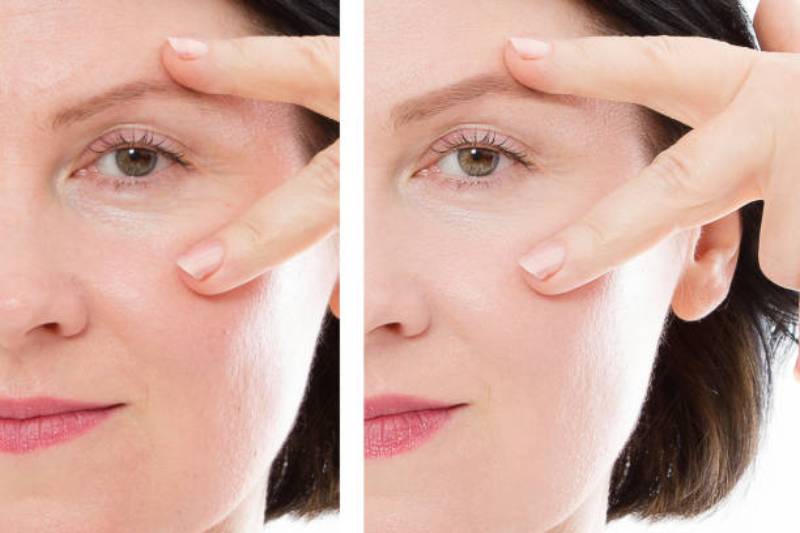Anti-wrinkle injectables, such as Botox, can be used to reduce the appearance of wrinkles in several areas of the face. Some common areas that can be treated with anti-wrinkle injectables include:
- Forehead wrinkles: These are horizontal lines that appear on the forehead when you raise your eyebrows.
- Frown lines: Also known as glabellar lines, these are vertical lines that form between the eyebrows when you frown.
- Crow’s feet: These are fine lines that appear around the eyes when you smile or squint.
- Bunny lines: These are wrinkles that appear on the bridge of the nose when you scrunch up your nose.
- Smoker’s lines: These are vertical lines that form above the upper lip, often caused by smoking or pursing your lips.
- Chin wrinkles: These are horizontal lines that form on the chin.
It is important to consult with a qualified and experienced medical professional, such as a dermatologist or plastic surgeon, to determine the appropriate treatment plan and placement of anti-wrinkle injectables for your individual needs.
Who is it for?
Anti-wrinkle injectables are generally used by adults who wish to reduce the appearance of wrinkles and fine lines on their face. These injectables are most commonly used by individuals who have noticed signs of aging, such as crow’s feet, forehead wrinkles, and frown lines. However, they can also be used by younger individuals who wish to prevent the formation of wrinkles or smooth out early signs of aging.
It is important to note that anti-wrinkle injectables may not be suitable for everyone. People who have certain medical conditions, such as neuromuscular disorders, may not be able to receive these treatments. Additionally, pregnant or breastfeeding women should avoid anti-wrinkle injectables, as their safety during pregnancy and lactation has not been established. It is always recommended to consult with a qualified medical professional before undergoing any cosmetic treatment.
How many anti-wrinkle injections will I need?

The number of anti-wrinkle injections you will need depends on several factors, including the area being treated, the severity of your wrinkles, and your individual goals. Generally, a single treatment session involves a few injections into the targeted muscles to achieve the desired effect.
The effects of anti-wrinkle injections are not permanent and typically last around three to four months, after which the treatment will need to be repeated to maintain the results. However, the exact duration of the effects can vary from person to person.
Your healthcare provider will evaluate your individual needs during an initial consultation and recommend a treatment plan based on your goals and desired outcomes. It is important to follow your healthcare provider’s instructions regarding the timing and frequency of treatments to achieve the best results and avoid any potential risks or complications.
What happens if you stop anti-wrinkle injections?
At what age should you get anti-wrinkle injections?
There is no specific age at which one should start getting anti-wrinkle injections as it depends on individual circumstances. Generally, anti-wrinkle injections are more commonly used by people in their 30s or 40s, who have begun to notice the signs of aging such as fine lines and wrinkles. However, some individuals may choose to start earlier to prevent the formation of wrinkles or smooth out early signs of aging, while others may wait until later in life to address more significant signs of aging.

It is important to note that the decision to undergo any cosmetic treatment should be made on an individual basis after consulting with a qualified healthcare professional. Factors that should be considered include an individual’s overall health, medical history, skin condition, and personal goals.
It is also important to remember that anti-wrinkle injections are a temporary solution to address wrinkles and fine lines. Maintaining good skincare habits such as using sunscreen, staying hydrated, and avoiding smoking and excessive sun exposure can help prevent premature aging of the skin.
